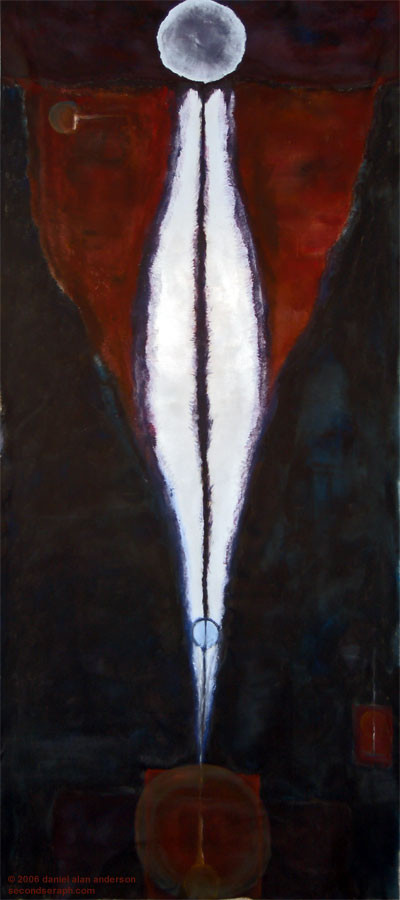HOME | DD
 secondseraph — The Swinging Gate of Life
secondseraph — The Swinging Gate of Life

Published: 2006-11-24 02:03:50 +0000 UTC; Views: 160; Favourites: 1; Downloads: 3
Redirect to original
Description
January, 2006An abstract painting in the Archetypal Narrative banner series. I wrote a more formal explanation of my interpretation of this piece, and though I hope the viewer can draw their own conclusions, I offer this interpretation if they're interested:
Throughout history and human life, ever since there was a man, the woman was said to be the most beautiful thing in all of nature. Strangely enough, there is one part of her that is unspeakable, and wears far too many derogatory titles for its preciousness. The Swinging Gate of Life is not a vulgar painting—it is an acknowledgment and exposition of the female’s greatest treasure, that organ that is the canal for every single human generation, and also for her lover’s longing. I find it strange that, for this object’s great necessity and sensitive beauty, it is always depicted in a terrible light when it is depicted at all. There is only one time when it is depicted well: when love is being made. And yet that action too is hushed and wears derogatory names, and is sometimes left to an individual’s own discovery like a wayward piece of ancient luggage addressed to no one. This is my exposition: the female form, every part of it, is beautiful, and is worthy of proper depiction.
In this narrative, the crevasse form (female genitalia) is a divine tool that bridges the gaps between the nothingness of pre-creation and creation-filled eternity. At the bottom is God, symbolized as an overlaying of circle and square (male+female, and God is both genders at once), with a square emanating a powerful but small line. This line crosses from the realm of pre-creation into the act of creation itself. Lens-like circles focus the action into two powerful, smooth, tesla-coil-like arcs that break the gap between eternity and pre-creation, and cause all of creation (represented by the brown chevron) to fan around it and meet eternity at the other side. As the crevasse ends, a white circle is at the top to meet it, and this is the moment of bliss.
The painting works in two directions: down-to-up, and center-to-forward. One can both trace the image from the bottom as if it is a vertical timeline, but as a flat symbol, the image is a massive declaration about the organic vessel through which humanity flows. The Swinging Gate is a gate for life itself, as well as pleasure, love, violence, and pain. It is a gate that swings both ways: things enter it and exit it. Hopefully this exposition does not strike the viewer as vulgar, for that is not my intention—it is meant to be beautiful and invigorating, though perhaps surprising and jolting. That said, however, the viewer may interpret the painting as they wish, and find their own story within the abstract forms represented.
© 2006 daniel alan anderson
secondseraph.com





















